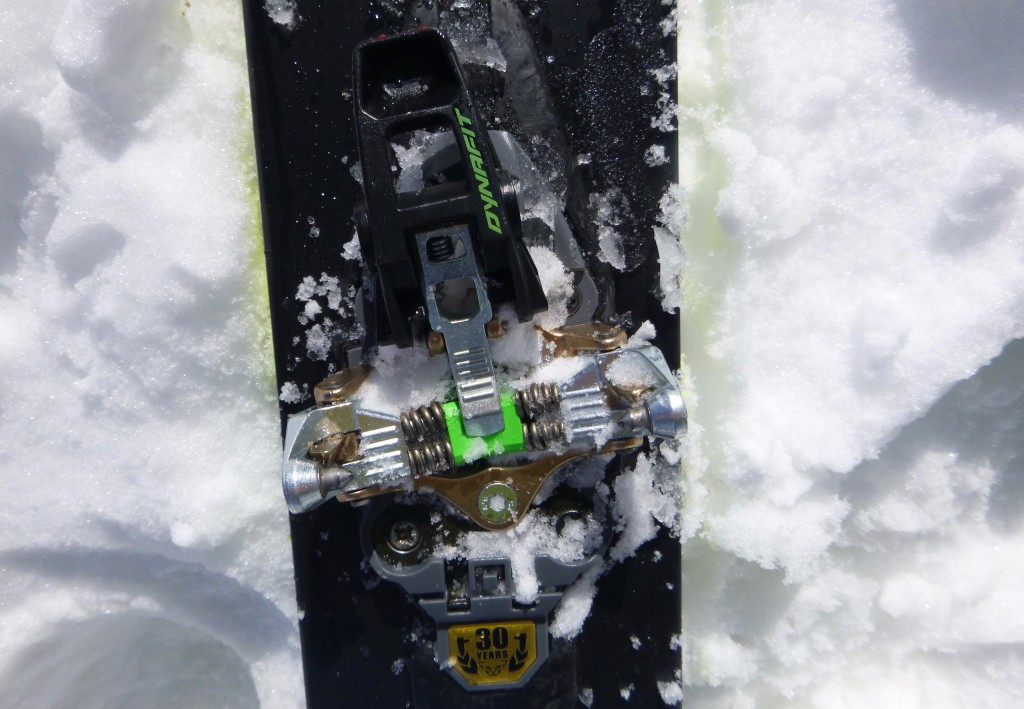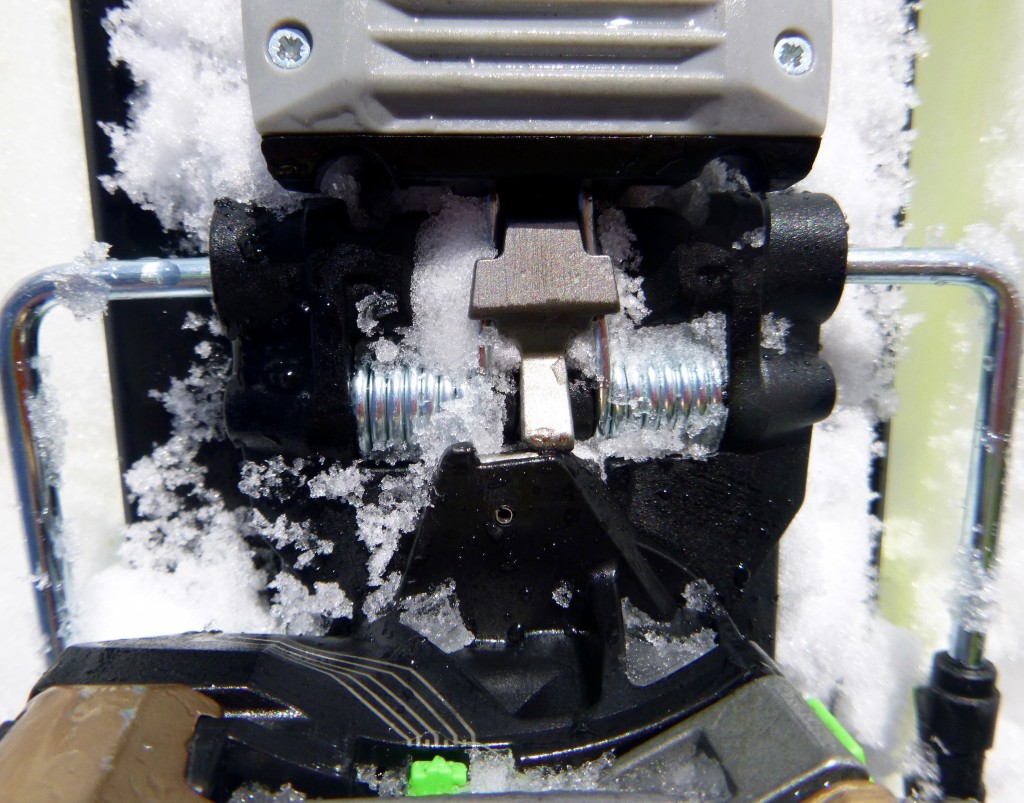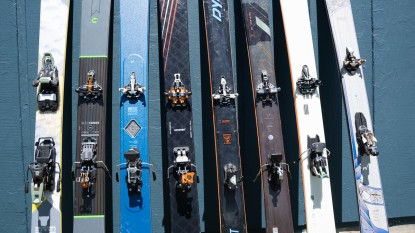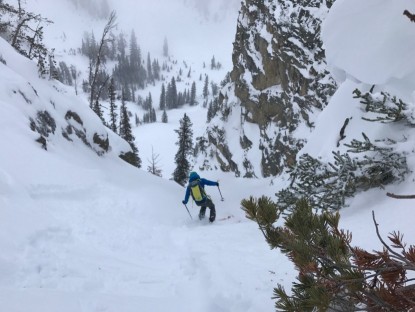Dynafit Radical ST 2.0 Review
Our Verdict
Our Analysis and Test Results
Performance Comparison
Ease of Use
While the new Radical 2.0 has many advantages, it certainly has a handful of disadvantages, including that it's slightly more challenging to step into (when compared to its predecessor). The 2.0 features a pivoting toe piece that rotates up to 5mm laterally on either side; this feature creates elasticity in the binding, offering increased safety and a more consistent releasability.
Touring Performance
Folks used to riding with the older Radical will notice that the brake doesn't automatically lock up into the touring position when you pivot the heel piece; this feature actually offers several advantages when compared to the older version. Our ski didn't slide away when we hadn't yet put the skins on, even when we had turned the heel piece into the tour position. After a short amount of practice, we had an easier time transitioning to touring mode with the new Radical 2.0 when compared to using the older version; we only had to pivot the heel piece a quarter turn instead of one direction all the way around, which can be found when using the Radical, the older version. For those accustomed to using older Dynafit models, it does feel a little strange (at first) to spin the heel of the binding counter-clockwise, though our testers agree this is a much improved design that makes the 2.0 more user-friendly.
Transitions
At first our testers found their transitions with the 2.0 took a split second longer, primarily because of the laterally pivoting toe. Even with the pivoting toe, we thought the 2.0 was noticeably easier to transition than our Top Pick, the Marker Kingpin 13, which forced the user to remove their boot and flip a leaver in order to transition back and forth from tour to ski modes. The leaver flip was also much more prone to icing up than the Radical. That said, the 2.0 wasn't quite as easy to transition on as the G3 ION 12 or the Fritschi Vipec.
Downhill Performance
The downhill performance of the this model is noticeably better than the older Radical and among the better tech style bindings in or review. The new 2.0, with its pivoting toe piece and forward-pressured heel design, has much better elasticity, resulting in a more alpine binding like feel that doesn't feel as harsh, especially in firmer conditions and at greater speeds. Many of the overall changes that went into the Radical 2.0 revolved around the company trying to obtain the TUV's ISO/DIN certification for safety and consistency in release values. While we don't think the older versions of bindings were dangerous, its hard to argue that the 2.0's aren't just straight up safer, because of both the elasticity of the binding, as well as the binding's ability to appropriately release you in more awkward falls.
Performing only marginally better on the decent, the Marker Kingpin 13 and the Dynafit Beast 16, the only other tech style bindings, were both significantly heavier when compared to this competitor (the 2.0). In our downhill comparison, the Fritschi Vipec performed very similarly to this model, with both bindings performing slightly better than the G3 ION 12.
Durability
In addition to an increase in safety and downhill performance, durability is another of the biggest upgrades seen in this contender. Though this model has only been in production for over a year, we have heard of almost no incidents (that involved breaking) with this pair of bindings. We talked to ski shops and guides, as well as the company's Warranty Department, and were able to conclude that the new 2.0 is one of the more durable tech bindings out there; if you're looking for a potentially tougher tech style binding, the Marker Kingpin can provide (do note that we've heard that the Kingpin bindings have more issues than the Radical ST 2.0).
As a whole, Dynafit bindings are among the most durable and longest lasting AT bindings out there; there are few (if any) bindings that we would rather take to remote corners of the globe. The engineers have done an excellent job designing their bindings, thinking about what materials to use, and knowing where to use them. They make some pieces out of plastic, designed to break first, in order to protect other (more important) pieces that are made out of metal; this is done in an effort to keep the binding from catastrophically failing.
Weight
The new 2.0 weighs 2 lbs 10 oz (1198g) per pair, five ounces heavier than the previous Radical ST. The newest version does pack in many advantages: increased durability and safety, and noticeably better downhill performance for only a five ounce weight penalty (which is still pretty average among tech bindings). The new model weighs the same as the G3 ION 12 and is a half pound lighter than the Marker Kingpin. The equally featured Fritschi Vipec weighs six ounces. If you are looking to shed some serious weight, the much less featured and brakeless Dynafit Speed Turn ($350) weighs a minimal 1lbs 10 oz. Another rad binding that is not featured in our review, but still offers an adjustable release value, is the Dynafit TLT Superlite 2.0, weighing only 13 ounces (350 grams) per pair without ski-brakes.
Best Applications
These bindings are fairly light weight, dependable, and very efficient backcountry bindings that are best for skis you will tour with more than half the time. They perform well enough for some resort based use, but if you plan to use your set up extensively for in-bounds skiing, we'd recommend a different binding like the Marker Duke or Baron 13 EPF.
Value and the Bottom Line
The $550 price tag is pretty on par with competing manufacturer's prices; comparable models, such as the G3 ION 12 also cost $550, with the Vipec costing $50 more ($600). While each of these bindings offer small advantages like marginally easier entry, in the case of the ION, or the Vipec's slightly lighter weight and marginally less involved transitions, the 2.0 strikes a pretty darn competitive balance of weight, ease of use, downhill performance, durability, and reliability.
Conclusion
If you are going to mount these on your set up, you should plan to tour 50% (or more) of the time - you wont be disappointed. While other bindings might offer slight advantages for certain applications, and the 2.0 might not be the absolute best at everything, it does almost anything well.
Other Versions and Accessories
Dyanfit also makes the Radical FT for Freeride Touring which is very similar to the ST; it offers higher DIN release values and more carbon fiber around the base of the bindings; in theory, this provides superior leverage and increased energy transmission.

















